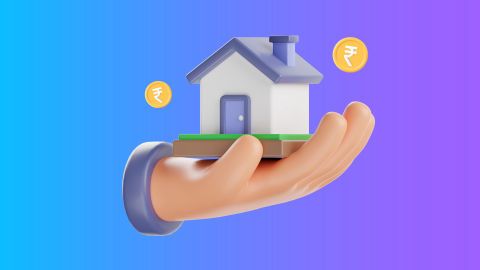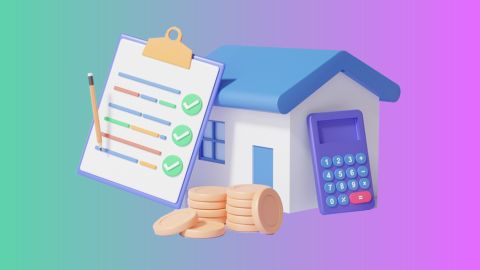In a world where digitisation is revolutionising every sector, property management is also stepping up its game with the digital property card. This new-age solution offers a seamless way to maintain property records and access them anytime, anywhere. As urbanisation increases, maintaining accurate and transparent property records has become essential. Here, the digital property card plays a vital role by providing a hassle-free, tech-driven alternative to traditional property cards. Understanding the nuances of a digital property card can also help in managing property-related financial services, such as
Loan Against Property, more efficiently. This article will guide you through what a digital property card is, how to apply for one, its benefits, and more.
What is a digital property card?
A digital property card is an electronic document that records property-related details such as ownership, location, size, and property tax details. Unlike traditional paper-based property cards, digital property cards are stored in a centralised database that can be accessed digitally. This card eliminates the hassle of physical paperwork and provides an efficient way to handle property records. The digital format is designed to offer easy access, increased transparency, and a streamlined process for property management. This also assists in minimising errors and disputes related to property ownership and tax.
Eligibility criteria for a digital property card
To obtain a digital property card, you need to meet specific eligibility criteria set by the municipal authorities or government bodies responsible for property records:
- Property ownership: You must be the legal owner of the property.
- Property documents: Ensure that all property documents are updated and verified.
- Payment of property tax: All pending property tax should be cleared.
- Valid identification: A government-issued ID like an Aadhar card, PAN card, or passport is required.
- Compliance with local laws: Compliance with the local municipal laws and regulations related to property ownership and transfer is essential.
How to apply for a digital property card?
Applying for a digital property card involves several steps. Here is a simple guide to help you through the process:
- Visit the official portal: Go to the official website of your local municipal corporation or land record office.
- Create an account: Register by providing basic details such as name, contact number, and email ID.
- Fill out the application form: Enter property details like location, size, and ownership documents.
- Upload required documents: Upload scanned copies of essential documents such as a government-issued ID, property tax receipts, and ownership papers.
- Pay the fees: There may be a nominal fee for processing your application.
- Submit the form: After filling in all the required details and uploading documents, submit the application form.
- Verification process: The local authority will verify your application and documents.
- Receive a digital property card: Once approved, you will receive the digital property card via email or through the online portal.
Documents required for digital property card application:
While applying for a digital property card, the following documents are generally required:
- Proof of identity (Aadhar, PAN, Passport).
- Proof of address (Utility Bills, Aadhar).
- Ownership documents (Sale Deed, Property Tax Receipts).
- NOC from previous owner (if applicable).
- Recent passport-sized photographs.
- Application form with signature.
Benefits of a digital property card
A digital property card offers numerous benefits:
- Easy accessibility: Access property details anytime, anywhere.
- Enhanced security: Digital records are less prone to tampering or loss.
- Transparency: Ensures transparency in property transactions and ownership details.
- Convenience: No need to maintain physical documents, reducing clutter and risk of loss.
- Quick processing: Faster and more efficient processing of property-related transactions.
- Cost-effective: Reduces the cost involved in manual record-keeping.
Comparing digital property cards with traditional property cards
| Feature | Digital property card | Traditional property card |
| Accessibility | Available online, easy to access anytime | Physical access required, limited to office hours |
| Security | Secure digital records with encryption | Prone to theft, damage, or loss |
| Transparency | Real-time updates and clear ownership records | Often involves manual updates and paper records |
| Cost and time efficiency | Faster processing with lower administrative costs | Slower process with higher manual intervention |
Technical aspects and integration of digital property cards
Digital property cards integrate various technologies like blockchain and Geographic Information Systems (GIS) to ensure data accuracy and security. Blockchain provides a decentralised, tamper-proof ledger, ensuring that property records are accurate and secure. GIS helps in mapping the exact geographical details of a property, thereby enhancing the credibility of the property card. Integration with municipal databases ensures real-time updates and transparency.
Real-life use cases of digital property cards
- Property transactions: Facilitates quick and easy property transactions by providing verified digital records.
- Loans and mortgages: Useful for availing of financial services like Loan Against Property, where property verification is crucial.
- Dispute resolution: Digital property cards offer clear ownership details, minimising disputes.
- Government schemes: Useful in availing benefits under government schemes related to property.
Security features of digital property cards
Digital property cards come equipped with several security features to prevent data tampering and fraud:
- Blockchain technology: Ensures tamper-proof records.
- Data encryption: Protects sensitive information.
- Two-factor authentication: Secures access to digital property records.
- Regular audits: Ensures the accuracy and integrity of records.
Regional variations in digital property card implementation
Different states may have varied approaches to implementing digital property cards. Some states offer advanced features, while others are in the initial phases of digitisation. When applying for a Loan Against Property, knowing these variations can help you understand the requirements specific to your region.
Conclusion
The digital property card is a revolutionary step in property management, offering a more secure, transparent, and efficient way to manage property records. As the world moves towards digital solutions, understanding the intricacies of digital property cards becomes crucial for property owners. Whether you are considering property transactions or applying for Loan Against Property with Bajaj Finance, a digital property card can make your journey smoother and more efficient.




